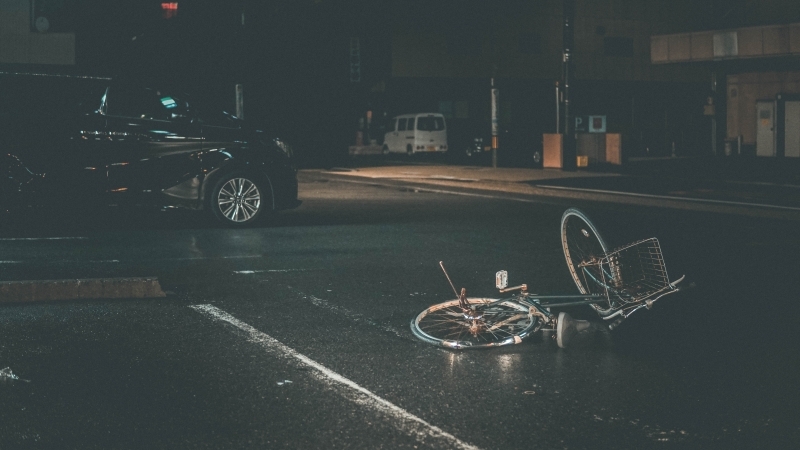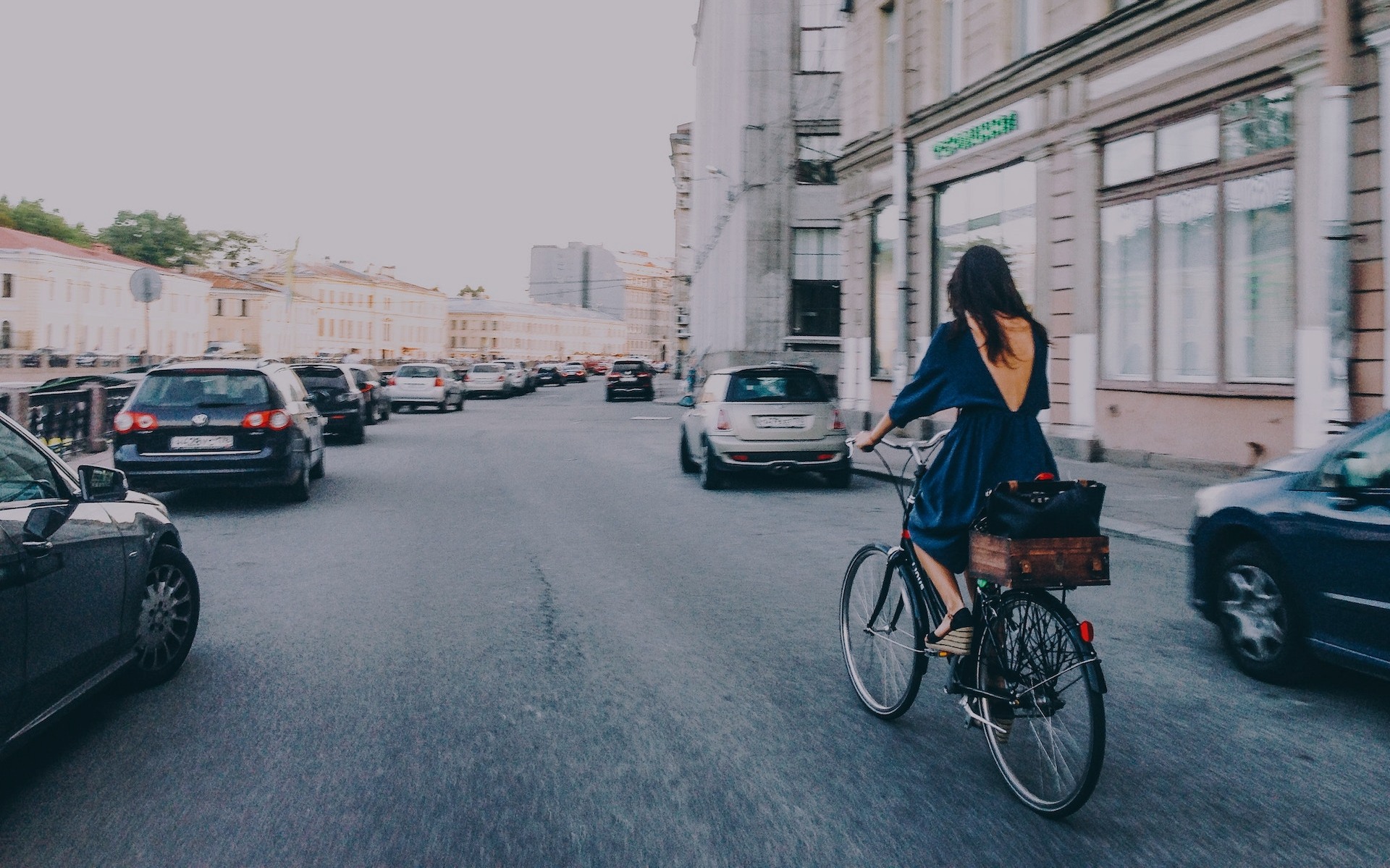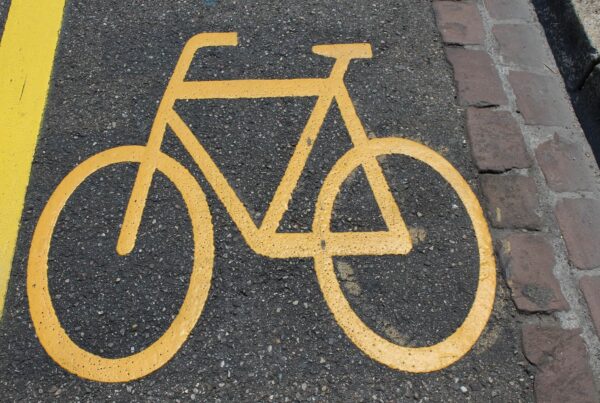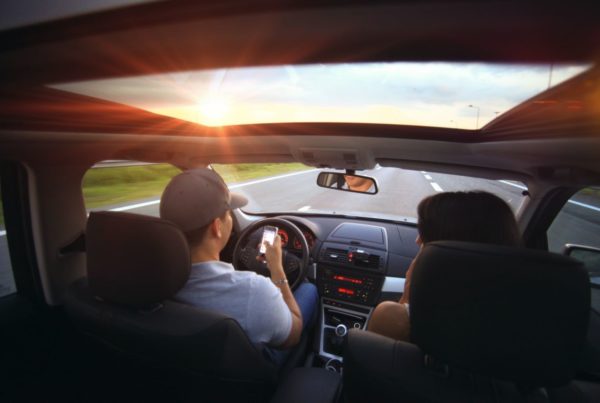Advice for Cyclist Hit By Car
A collision with an automobile is the greatest fear most people have about cycling; in fact, the fear of a collision with a car is the single greatest impediment to getting more people on bikes– many people want to ride, but don’t feel safe when bicycle infrastructure is inadequate or nonexistent.
Although a collision with an automobile is the greatest hazard cyclists face, there’s one reassuring bit of news: the fact is, it’s a relatively uncommon occurrence. Most bicycle accidents are in fact solo accidents involving a defect or some other hazard in the road or trail. Additionally, in most accidents, whether involving a road hazard or an automobile, the rider is a child. In short, collisions between adult cyclists and cars are relatively rare occurrences.
Nevertheless, occasionally a cyclist is hit by a car. Regardless of whether a bicycle accident is a solo accident, or involves a collision with an automobile, the accident is usually the result of somebody’s negligence– the driver’s negligence, the cyclist’s negligence, both the driver and the cyclist, or the local government responsible for the condition of the roads and trails. Because somebody is usually at fault in an accident, many cyclists prefer to call accidents “crashes” or “collisions,” instead of “accidents,” because they believe that the word “accident” implies that nobody is to blame. But a bicycle crash is almost always the result of somebody’s negligence. If the negligent party in that crash is the driver, (or the government agency responsible for the roads, or even the manufacturer of a defective bicycle product), the cyclist has a legal right to be compensated for his or her injuries.
- Related Article: Why We Say “Bicycle Accidents” Are Not Accidents
In the case of a car-on-bike collision, you will be negotiating with the driver’s insurance company to compensate you for all of your injuries and losses. Negotiations with the driver’s insurance company will always focus on who was negligent (you or the driver), and to what degree. If you and the insurance company can agree on the question of negligence and the amount of damages, the case will be settled. If you cannot reach an agreement, it will be necessary for you to prove that the driver was negligent in a court of law in order to recover compensation for the injuries received.
Because a lawsuit is the next step if an agreement on compensation cannot be reached, the vast majority of injury cases are settled out of court. However, because the legal and accident forensics issues can be complex, cyclists who have suffered anything more than very minor injuries should always discuss their case with an attorney experienced at handling bicycle accident cases before talking with the driver or the driver’s insurance company.
What to do if you are involved in a car-on-bike accident
Many drivers who cause accidents will initially apologize and accept blame for the accident, but later, after they have had time to consider the ramifications of their negligence, will deny that they were negligent. They may even deny that they were present at the accident scene!
Always wait for the police to respond to the accident scene so that an official report will be filed. When a cyclist is hit by a car, sometimes they do not realize that they have been injured until several hours after the accident. Seemingly minor injuries may develop into serious and permanent injuries. By then, it may be too late to identify the at-fault driver.
You should not attempt to negotiate with the at-fault driver. The driver may not give you accurate information about his or her identity, insurance coverage, or vehicle ownership. Many drivers who cause a crash will apologize at the scene and accept blame for the collision, but later, after they have had time to consider the ramifications of their negligence, will deny that they were negligent. They may even deny that they were present at the accident scene! By waiting for the police, you have an independent third party at the scene of the collision who has the authority to demand the driver’s identity, registration, and insurance information.
Similarly, you should never tell the driver or the police that you are “OK.” The truth is, you don’t actually know if you are OK, because you haven’t been evaluated by a doctor, so why would you want to assure the driver and police that you are “OK”? What if you have been injured but don’t realize it yet? You don’t want the driver’s insurance company to have it on record that you said you were OK; a doctor is the only person who should ever give you a clean bill of health.
If the police write an accident report, make sure that it’s accurate. The accident report will include the driver’s statement as well as all other witness statements. The responding officer may decide to ticket the driver, and this can be useful when trying to settle the case with the insurance company.
The accident report should also include the cyclist’s statement; unfortunately, law enforcement officers don’t always take a statement from the cyclist before completing their report. In these instances, the officer may have already decided that the cyclist is at fault, without even talking to the cyclist. Therefore, make sure you give your statement to the officer after the collision, if you are able to do so.
Regardless of whether an accident report is written, make sure that you have the driver’s name and contact info, as well as the names and contact info of any witnesses. If you are physically unable to gather this information, ask a witness to do it for you.
The accident scene should be investigated for information about how the accident occurred. The investigation should include obtaining skid mark measurements, photographing the accident scene, speaking with additional witnesses, and measuring and diagramming the accident scene.
See a Doctor Immediately After the Crash
In one famous example that highlights the dangers of hidden injuries, rock musician Stiv Bators died after being hit by a taxi in Paris. Bators went to a hospital after the collision, but after waiting fruitlessly for several hours to see a doctor, he assumed that he was not seriously injured and went home without seeing a doctor. He died later that night in his sleep from an undiagnosed traumatic brain injury.
In the minutes and hours immediately after a crash, DO NOT assume anything about your injuries. It’s very common for people to assume that they haven’t been seriously injured following a collision, only to have the true extent of their injuries become apparent later. If you’ve been involved in a crash, it’s vitally important for you to see a doctor immediately afterwards. A cyclist who’s been hit by a car should not decide anything about the seriousness of their injuries; let the doctor decide if your injuries are not serious. By seeking prompt medical evaluation and treatment, you are giving yourself the chance to catch a serious injury in the early stages—and if you haven’t been seriously injured, you are giving yourself the chance to get a clean bill of health from a doctor.
And because you will be dealing with the driver’s insurance company, a prompt medical evaluation and treatment for your injuries will establish that you were in fact injured, while the medical records generated by the medical provider will help establish the extent of your injuries. Have several photos taken, from different angles and under different lighting, as soon as possible after your accident. Keep a journal (an “injury diary”) of your physical symptoms starting immediately after the accident, and make entries every couple of days.

Consult With An Attorney Before Talking With The Insurance Company
Do not communicate with the driver’s insurance company before consulting with an attorney. Most cyclists want to be fair and reasonable with the insurance company. Unfortunately, when you communicate with the insurance company, they are gathering information to be used against you later. What you see as an effort on your part to communicate a fair and honest account of the accident will be seen by the insurance company as an opportunity to gather evidence in support of their argument that your negligence caused the accident.
Contact bicyclelaw.com or another personal injury attorney who understands bicycling. While many attorneys are competent to handle general injury cases, make sure your attorney has experience and is familiar with:
- Bicycle traffic laws
- Negotiating bicycle accident cases with insurance companies
- Trying bicycle accident cases in court
- The prevailing prejudice against cyclists by motorists and juries
- The names and functions of all bicycle components
- The speed bikes travel as well as braking and cornering
- Bicycle handling skills, techniques, and customs
- How to get the full replacement value property damage estimates for your bicycle
- Establishing the value of lost riding time
- Leading bicycle accident reconstruction experts
- Licensed forensic bicycle engineers
- Establishing the value of permanent diminished riding ability
For more information
For information about protecting yourself with insurance, see Insurance Advice.
For more in-depth information about accidents and insurance, see Bicycling & the Law.
For information on avoiding accidents before they occur, see How to Avoid Car-On-Bike Accidents.
Related Article: Why We Say “Bicycle Accidents” Are Not Accidents




